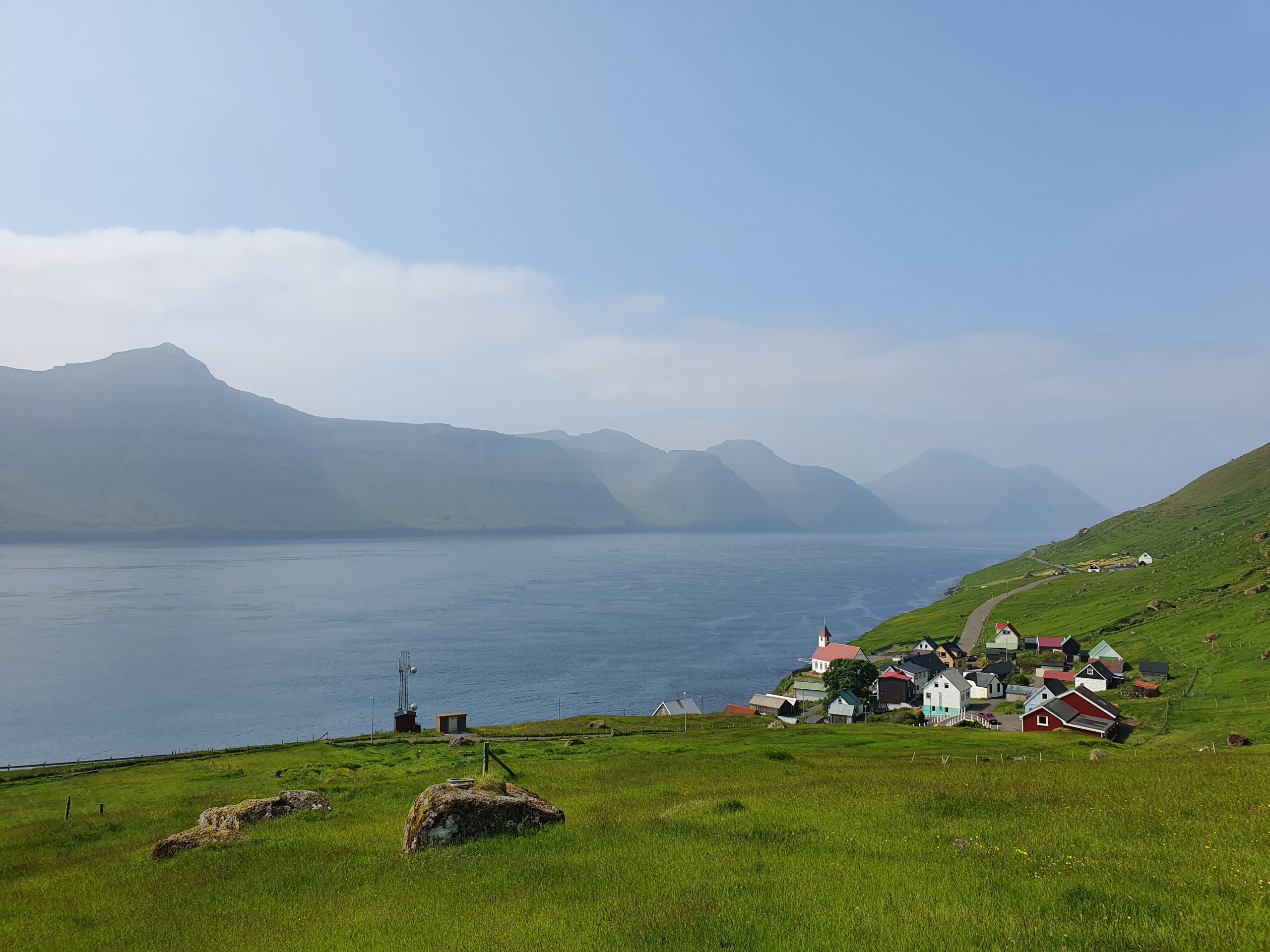Trip date: July 2021
Why The Faroe Islands?
- This is somewhat off-the-beaten-path of a destination
- It’s an independent country, part of the Kingdom of Denmark
- It has a distinct language
- Of course… the spectacular scenery
Due to Covid, there were limited flights to the Faroe Islands from Iceland. There were only two flights per week. So for this first trip, we decided to stay for three nights to experience this country of only 53,000 people.
Day 1: Exploring Tórshavn
After arriving at Vágar Airport (FAE), the only international airport serving the country, the first thing we had to do was to take our Covid test. We then picked up the car and headed to our hotel in Tórshavn, the capital of the Faroe Islands.
The drive from the airport to the hotel was nothing like I’ve experienced before. I drove around a lake (Sørvágsvatn), fjords, then a tunnel before getting closer to Tórshavn.
After checking in to the hotel, we took a long walk into town for dinner at Etika, the only sushi restaurant in the country. The reason we chose Japanese was because we wanted to try the local fish. US$120 later, it was time to walk it all off.
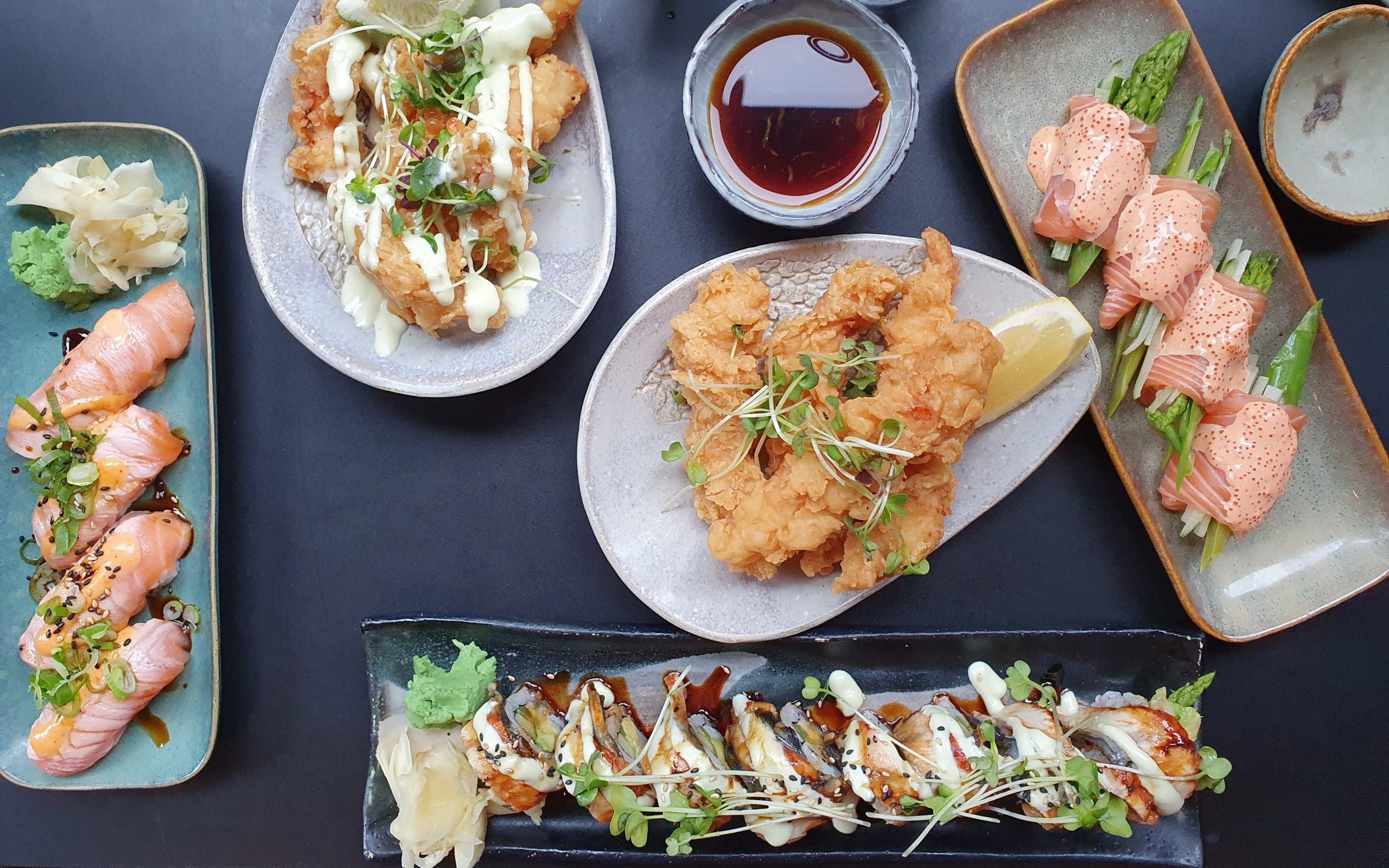
Tórshavn is definitely one of the smallest capital cities (well, town) I’ve been to. Reyn, part of Old Town, has old wooden homes dating back to the 14th Century, with the famed grass roofs.
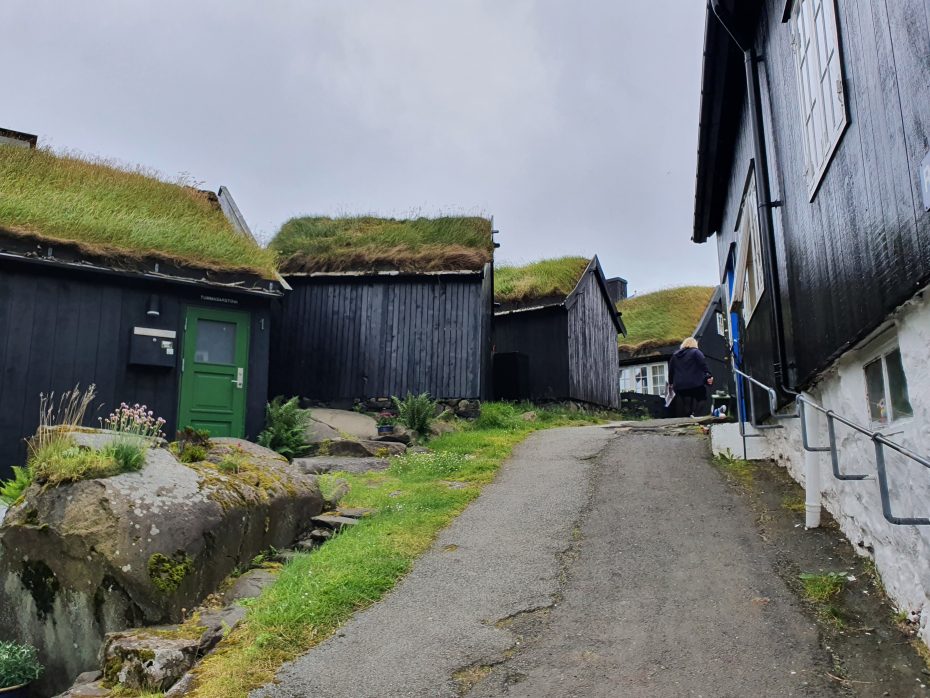
Then a little further is Tiganes, the seat of government of the Faroe Islands. A series of Faroese traditional wooden buildings lined up towards the harbor, ending at the flag pole. As we have to get up early the next morning, we decided to go back to the hotel for a good night’s sleep.

Day 2: Saksun, Tjørnuvík (Streymoy), Hellurnar, Oyndarfjørður and Gjógv (Eysturoy)
The second day was a full day of driving to five villages between the islands of Streymoy and Eysturoy. It was also the day in which I realized driving in the Faroe Islands was all about up, down, around, over and through mountains. In addition, the weather can change every five minutes.
Saksun
This is a small village (of 8) that is one of the most popular in the Faroe Islands. The village borders a bay that used to be a harbor. The iconic Saksun Church along with the traditional Faroese houses with grass roofs, and the waterfall nearby made a picturesque sight.

Tjørnuvík
This village tucked away inside a deep valley is actually a surfing spot that faces the Atlantic Ocean in the distance. It is supposed to be a three-hour hike from Saksun; however, we decided to drive all the way around to get to the village.
As we look out into the Atlantic, there are two rocks called Risin and Kellingin (The Giant and the Witch), which are said to have tried to pull the Faroe Islands back to Iceland and then they were turned into stone with the rising sun.

Hellurnar and Oyndarfjørður
We then headed towards the island of Eysturoy to visit Hellurnar and Oyndarfjørður, which sit on opposite sides of the same bay. This was an off-the-beaten-path suggestion my our hotel desk agent. Hellurnar is the smaller village of the two, with small port at the end of the village which offered a beautiful view of the bay.

Gjógv
The name of the village means “gorge,” which is one of the major features of this village. It is probably the most popular of all of the villages on the Faroe Islands. We saw the most tourists here than any other town. There is even a river that runs through the middle of the town which gives it additional charm.
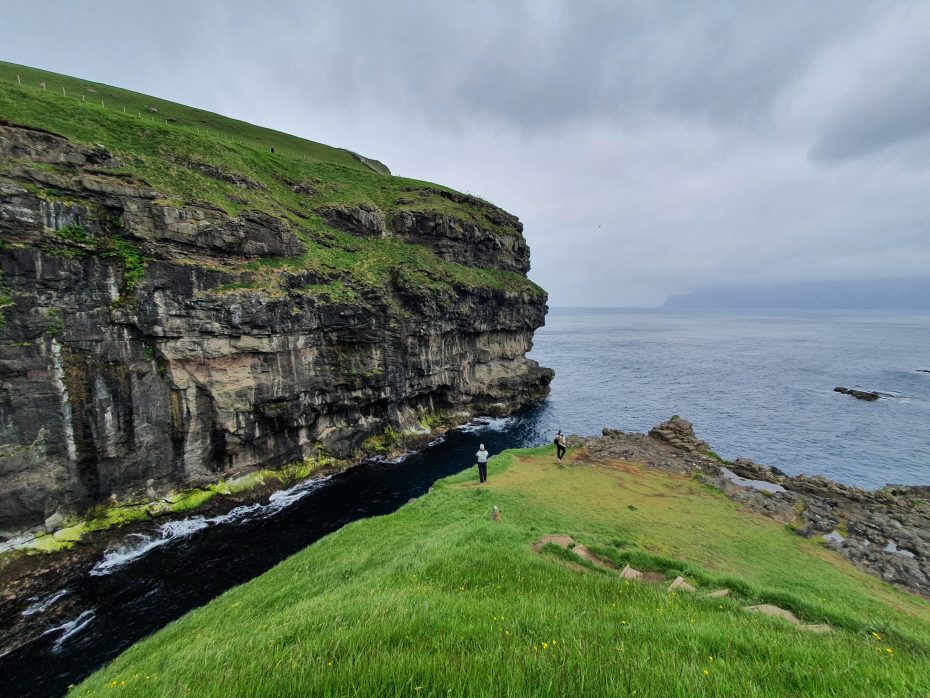
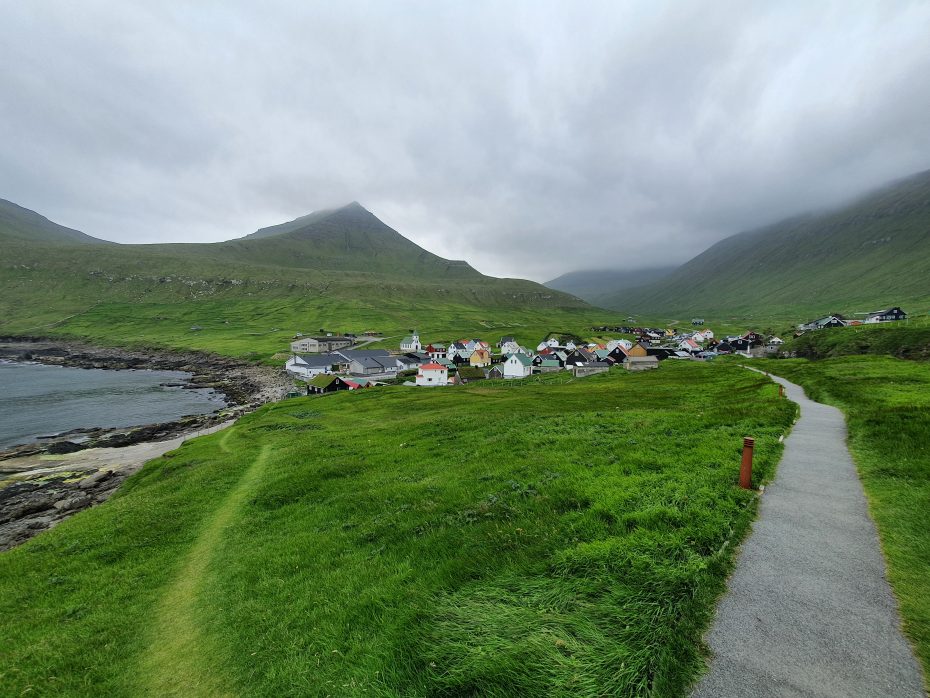
The Shortcut Back to Tórshavn via the Eysturoyartunnilin
After a full day’s of driving, it’s (again) time to go back into town. Our trusty Google Maps led us to take the Eysturoyartunnilin (Eysturoy Tunnel) that opened in December 2020. The 6.98-mile (11.24 km) long undersea tunnel connects Tórshavn on Streymoy to two separate points on the island of Eysturoy. As a result, this tunnel also features the world’s first undersea roundabout.
It’s expensive to cross this tunnel, at a cost of 175 DKK (US$27, or 24€) each way for us tourists.
Day 3: Kallur Lighthouse (Kalsoy), Kunoy
Kallur Lighthouse
The main event of the visit is finally here – Kallur Lighthouse on the island of Kalsoy. The photos of the lighthouse is probably one of the iconic images of the country. Getting there is quite easy. I’ve explained this in my post here.
To get to the island of Kalsoy, you must take a 20-minute ferry from Klaksvík. If you plan to take your car, you need to get to the ferry terminal early. We arrived an hour early and ended up being the last (12th) car on the 10am ferry on Sunday.

After arriving in Kalsoy (Syðradalur), we drove off the ferry onto the only road on the island, straight for the village of Trøllanes for our 11am guided hike.
One of the features of this island is the dark, wet and single-lane tunnels. There are four of them. Prior to arriving in the Faroe Islands, I viewed quite a few YouTube videos of the tunnels to feel more comfortable. Driving through them was definitely an experience. Just remember there are turn-offs every 100 meters (328 feet) should you see a car coming the other way.
After getting to Trøllanes, we parked our car and waited outside for our guide. A few minutes later he showed up. We then find out his family actually owns the two mountains here, including the one the lighthouse is on. His family has been in the area for 15 generations.
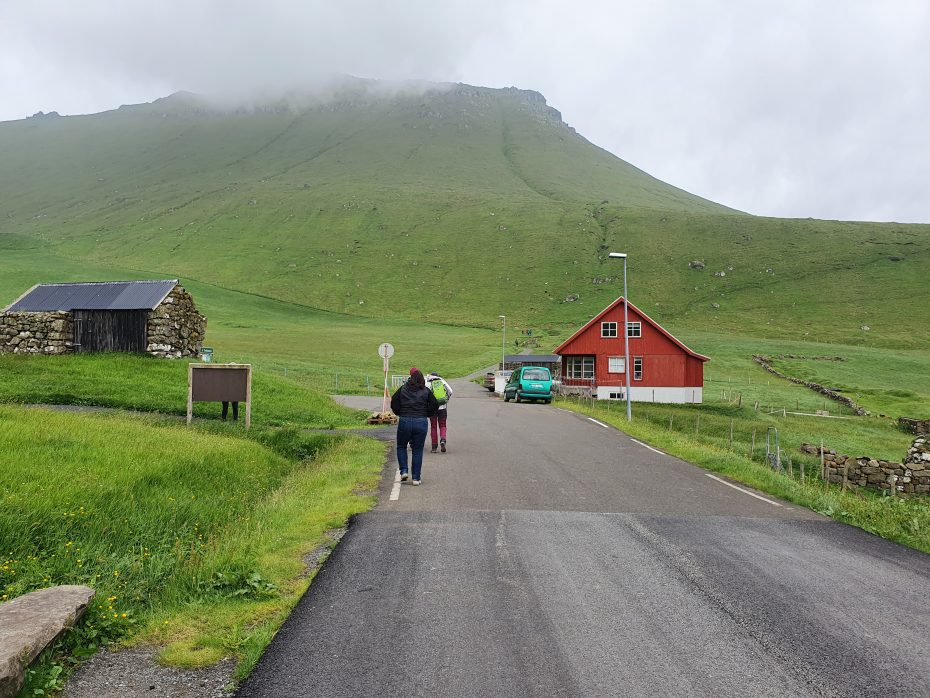

The hike was doable, but definitely was not the easiest as we were consistently walking along the side of the mountain with a very narrow trail. We almost twisted our ankles a few times (and we had proper hiking shoes).


The hike itself wasn’t long at all, and we reached the lighthouse in no time. Our guide then explained to us that legally, the lighthouse itself is in Denmark, which made it more interesting. We didn’t hike beyond it as we were just in awe at the scenery before us. Most importantly, we didn’t feel like hiking along a narrow ridge.
While a guided hike was not mandatory for this particular hike, we thought it was well worth it as we had someone who could tell us the history behind it, but more importantly know the right hiking path to take. To book the hike, use the link on Hiking.fo.

On our way back to the ferry dock, we stopped by to see the famous Seal Woman (Kópakonan) in the village of Mikladalur.
Kunoy
Before heading back to town, we drove a short distance to the island of Kunoy (with yet another one-lane tunnel) to Kunoy village. The main attraction here is Kunoy Park, which is a small park with… trees. If you haven’t noticed, there are almost no trees in sight in the Faroe Islands, so a park with trees is a treat. There is even a small stream behind the park.



Day 4: Gásadalur
It’s our last morning here, and it’s time to head to the airport. As we didn’t get a chance to see Gásadalur and the famour Múlafossur when we first arrived, we wanted to do it before we leave. Gásadalur is actually only 15-20 minutes away from the airport. Sadly, we did this one in a hurry, but next time we’ll definitely spend more time here and do it proper justice.

In Summary
The Faroe Islands is a beautiful place, and I am so happy I finally made it here. While I didn’t get to see all of the major sites such as Mykines (the path to the lighthouse was closed), this means more for next time. The other ‘bummer’ was that I didn’t get a passport stamp, as flying to and from Iceland did not require one.
Practical Information
How to get here: Atlantic Airways (the national airline) and SAS are the only two airlines that serve Vágar (FAE), SAS only from Copenhagen. We flew to The Faroe Islands from Reykjavík on Atlantic Airways.
Immigration procedures: While The Faroe Islands isn’t part of the Schengen Zone, flights to and from the Schengen Zone are treated as such. No immigration formalities are needed. The only non-Schengen Zone flight at this time is to Scotland.
Covid Testing: Please refer to this post for more information.
Where to stay: There are 18 main islands in The Faroes. Tórshavn is the capital city, and it’s usually where most stay.
Money: The Faroe Islands uses both the Danish Kroner and the Faroese Króna (they are 1:1). However, the Faroese Kroner may not be used outside of The Faroe Islands. Coins are Danish coins.
Tipping: Service is already included. No tipping is expected.
Internet/Mobile Data: Internet is quite fast. In general, mobile data from EU countries may be used here and counted as if you were in your home country. Double check with your carrier before you travel. The Faroe Islands would be listed as a separate country.
Maps: As best practice, download an offline map using Google Maps to minimize data usage.
Hiking: Check out the guided hikes available. Hikes could be paid (mandatory) with a guide, paid via a dropbox, or free.
Tunnel Tolls: You can find the latest tunnel charges on the Tunnil.fo website. Rental car companies used to offer a flat-rate tunnel crossing charge, but with the opening of the Eysturoy Tunnel this is no longer offered. Your rental car company should just post a tunnel charge post-rental.
Local News in English: KVF (Kringvarp Føroya), the local Faroese broadcasting company, offers a page of Faroese news in English.
Official Tourism Site: Visit Faroe Islands is the official place to go for information.

